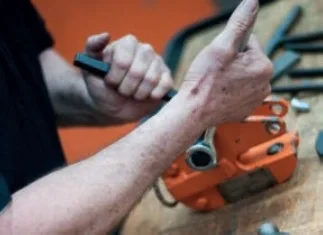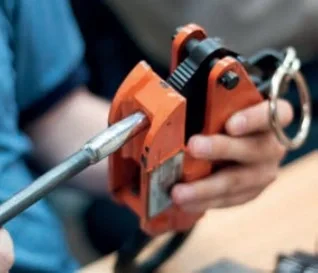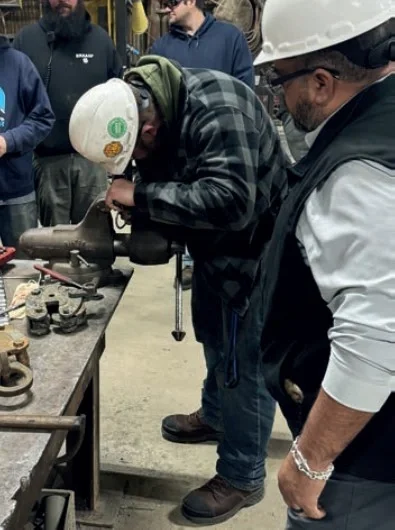
Clamps for lifting come in many designs and are used in a myriad of applications, including working with plate steel, ingots, slabs, concrete barriers, pipe, coil steel, paper bales and paper rolls.
A lifting point, meanwhile, is the connection between the lifting means and the load. It connects the loaded goods with the lifting gear both during lifting and rotation as well as during turning and movement. Lifting points are commonly ringbolts or eyebolts that the sling is attached to using hooks, shackles, or other connection elements.
They are both essential products in any rigging store, but it is important to support them with a proper inspection and maintenance programme, based on standards and manufacturers’ guidelines. This is the responsibility of the end user.

Inspection and maintenance are largely rolled into one conversation — or one product manual — but inspection is based on looking at each part of the product, whereas maintenance is focused on making sure the item stays in good condition until the next use. We can also look at maintenance as the rebuilding or reconditioning of the equipment to bring it back into acceptable working order.
PRE-USE CHECKS
In the US, ASME requires that all hoist rings, lifting points, and clamps are thoroughly inspected once per year. Ideally, however, the owner will centre their inspection programme on how often they use the products. If they utilise them daily, or in a severe environment, one inspection per year is clearly not sufficient. Standards generally are an excellent starting point, but each shop has its own unique environment as well as work schedule. For example, an industrial aluminium manufacturer may be running its equipment on three shifts versus a smaller construction company that only opens its rigging store for occasional bridge jobs.
Reputable manufacturers recommend that before each use, certain components should be inspected to make sure the product operates like it was designed for. A visual inspection is quick and a great safety reminder for the user. Some manufacturers put wear marks on the load bearing portion of hoist rings, for example, to aid a visual reference that the ring is not worn out. (See insert for full checklist).
DEFECTIVE PROTOCOL
Central to maintenance is that the product is kept clean, even using an air hose to blow off dust and debris. Remember, a product does not have to be defective for it to need maintenance; it might require a new bolt, which manufacturers have readily available. A damaged thread may not point to misuse or overload situation, and further damage in many cases will not have been caused.

Whether discovered on a pre-use or periodic inspection, if a defect is found by a qualified, competent person, it needs to be addressed immediately. If the defect is caused from manufacturing, the user needs to contact the manufacturer. If the damage is from improper use, the user must address the usage issue and replace the lifting product. Defective components should be taken apart so they cannot be used.. We also recommend RFID tagging so the end user can ensure all lifting points and clamps are tracked for inspection.
LIFTING CLAMP / POINT CHECKLIST
- Visually look for warning labels, ID tags, and markings.
- Visually look for signs of overload or misuse.
- Physically examine teeth in the clamp cam jaws.
- Physically examine screw cups for wear on clamps and screw threads for lifting points.
- Inspect the mechanics.
- Inspect bails / masterlinks for any deformation.
- Inspect screw components for any uneven or worn threads.
- Determine the annual inspection / repairs needed.
- When inspecting clamps, document each one by serial number to determine past and future parts.
- Keep inspection documentation for future parts / repairs (covering clamp model type, capacity, serial number, location, condition, rebuild / repair recommendation).
- When in doubt on the sharpness of teeth, apply clamp to lifting plate, lift a few inches of the ground and return to the ground. Inspect witness marks on the plate that the teeth / screw cup has left.
- Always refer to manuals for dos and don’ts.






